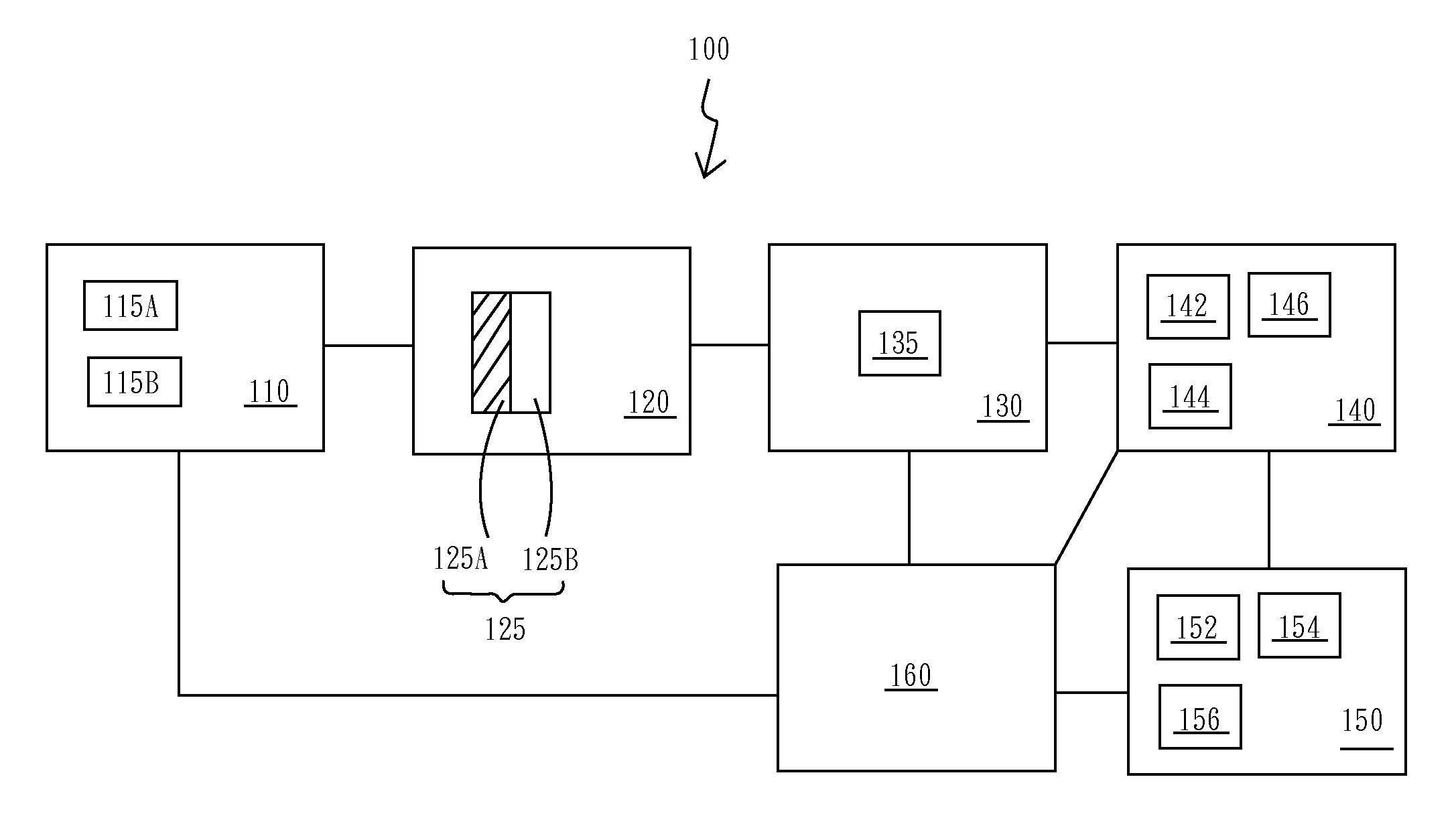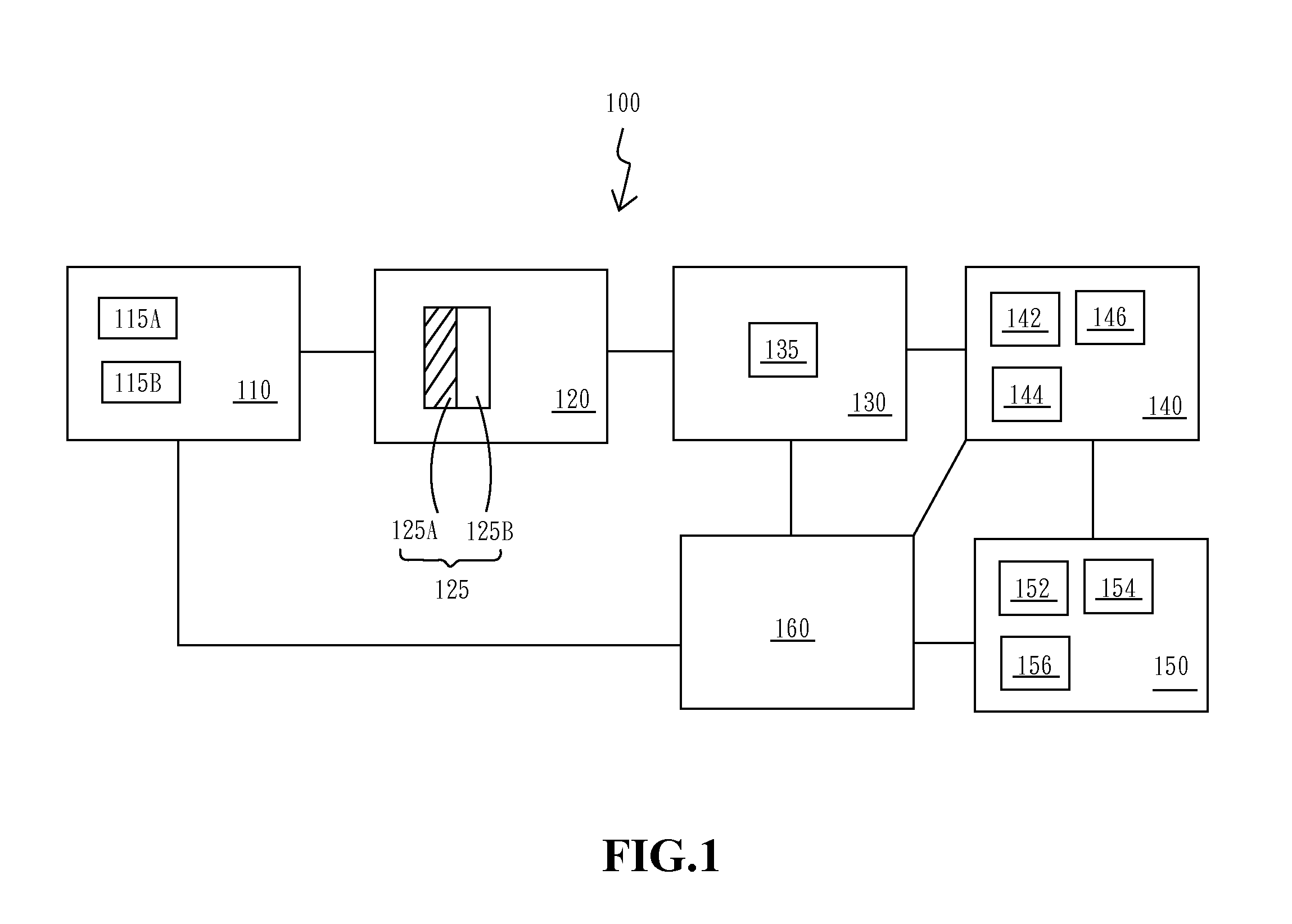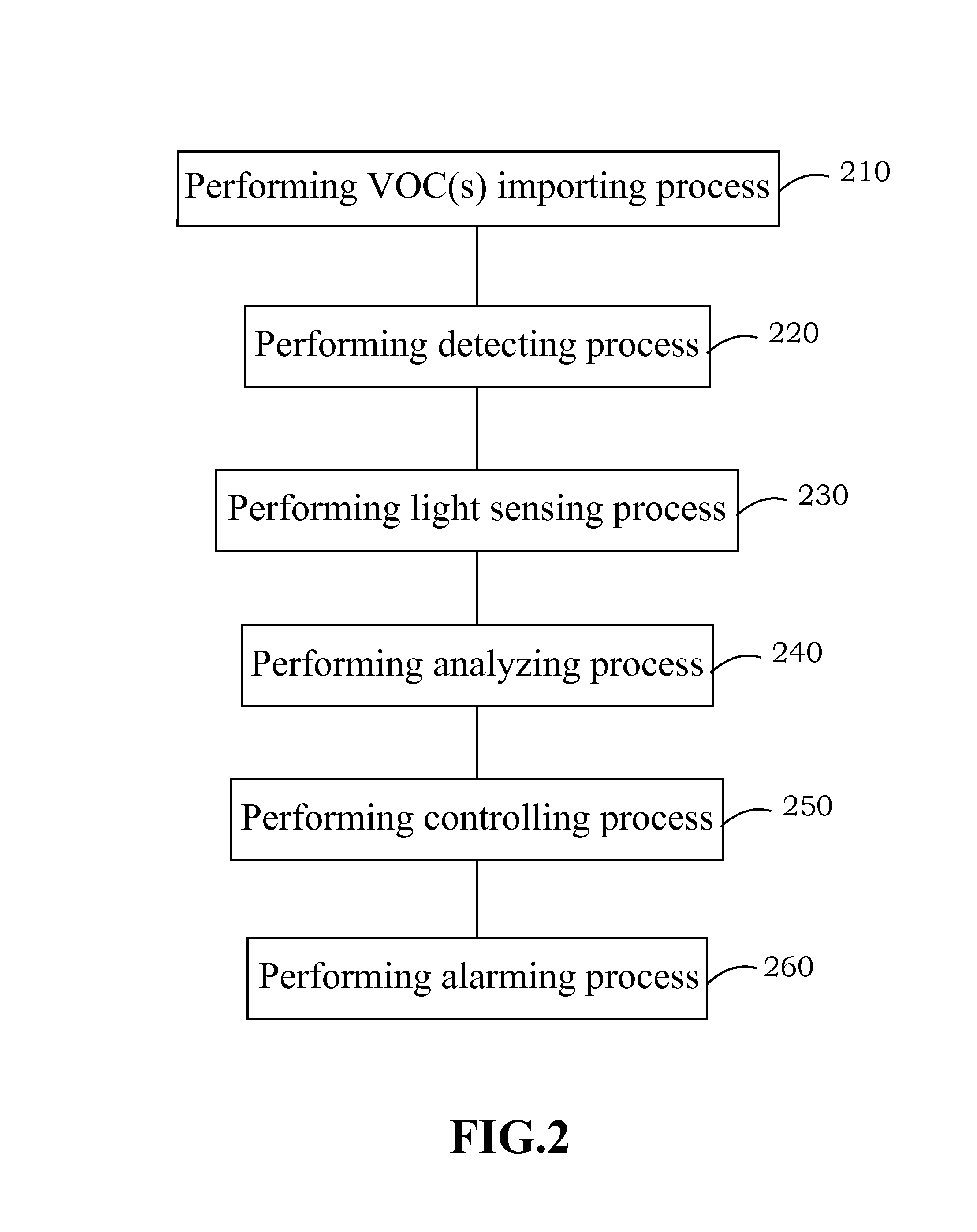System for detecting volatile organic compounds and the method for forming the same and utility thereof
a volatile organic compound and detection system technology, applied in the field of detection systems, can solve the problems of insufficient time for the conductive polymer to achieve organized morphology, and achieve the effect of improving the reliability of the detection system, and reducing the risk of contamination
- Summary
- Abstract
- Description
- Claims
- Application Information
AI Technical Summary
Benefits of technology
Problems solved by technology
Method used
Image
Examples
first embodiment
[0036]The first embodiment according to this specification discloses a detecting system for volatile organic compounds (VOCs) 100, as shown in FIG. 1. The detecting system for VOCs 100 comprising: a light providing module 110, a detecting module 120, a light sensing module 130, an analyzing and controlling module 140, an alarming module 150, and a power supplying module 160. The light providing module 110 is employed for providing full-spectrum light source. In one preferred example of this embodiment, the light providing module 110 can further comprise a laser light module, or a light emitting diode (LED) light source. The detecting module 120 is located at a first specific location in the optical path of the light providing module 110, so that the detecting module 120 can receive light energy from the light providing module 110. The mentioned detecting system for VOCs 100 can further comprises an accommodating part between the light providing module 110 and the detecting module 12...
second embodiment
[0045]The second embodiment according to this specification discloses a detecting method for volatile organic compounds (VOCs), as shown in FIG. 2. In order to illustrate this embodiment more clearly, the following description also can be referred to FIG. 1. Firstly, the detecting system for VOCs 100 is provided. The inlet port of the detecting system for VOCs 100 is placed in a preset position, and a VOC importing process 210 is performed for importing the VOCs into an accommodating space of the detecting system for VOCs 100. Then, a detecting process 220 is performed by the detecting module 120, and the light-transmissive detecting device 125 of the detecting module 120 is employed to adequately contact with VOCs. The morphology of the conductive polymer of the detective layer 125A of the detecting module 120 will be rapidly changed with the π-π stacking effect of the molecular structure of the conductive polymer induced by the VOCs. Subsequently, a light sensing process 230 is pe...
third embodiment
[0046]The third embodiment according to this specification discloses a method for forming a detecting device for volatile organic compounds (VOCs), as shown in FIG. 3. Firstly, as the first blending process 310, a conductive polymer with π-π stacking effect molecular structure is blended with an anti π-π stacking compound in nanoscale in a solution to form a first blended material 315. The mentioned solution further comprises chlorobenzene. The conductive polymer and the anti-π-π stacking compound are respectively selected from the same groups as the foregoing embodiment about the materials and conditions of the detecting layer 125A. The blending weight ratio of the conductive polymer and the anti-π-π stacking compound is the same as the foregoing embodiments about the blending conditions of the detecting layer 125A. When employing the conductive polymer with higher molecular weight (Mw), the producing molecular structure will tend to be folded into a thin sheet-like structure. The ...
PUM
| Property | Measurement | Unit |
|---|---|---|
| molecular weight | aaaaa | aaaaa |
| wavelength | aaaaa | aaaaa |
| wavelength | aaaaa | aaaaa |
Abstract
Description
Claims
Application Information
 Login to View More
Login to View More - R&D
- Intellectual Property
- Life Sciences
- Materials
- Tech Scout
- Unparalleled Data Quality
- Higher Quality Content
- 60% Fewer Hallucinations
Browse by: Latest US Patents, China's latest patents, Technical Efficacy Thesaurus, Application Domain, Technology Topic, Popular Technical Reports.
© 2025 PatSnap. All rights reserved.Legal|Privacy policy|Modern Slavery Act Transparency Statement|Sitemap|About US| Contact US: help@patsnap.com



